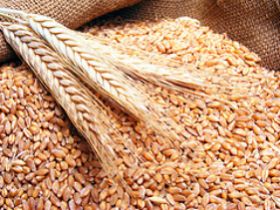 re forecast to be around 10.3 MMT in 2014/15 compared to 10.0 MMT in MY 2013/14, with the Ministry of Supply and Internal trade’s (MoSIT) General Authority for Supply Commodities (GASC) projected to import over 5.7 MMT in 2014/15, and the rest to be imported by the private sector.
re forecast to be around 10.3 MMT in 2014/15 compared to 10.0 MMT in MY 2013/14, with the Ministry of Supply and Internal trade’s (MoSIT) General Authority for Supply Commodities (GASC) projected to import over 5.7 MMT in 2014/15, and the rest to be imported by the private sector.From July 2013 through Mid April 2014, most of MY 2013/14, GASC has imported about 4.345 MMT and is projected to import an additional 1.155MMT by the end of MY 2013/14, bringing GASC’s total imports to approximately 5.5 MMT for its subsidized “baladi” bread program. Private sector imports are likely to remain at about 4.5 MMT.
The Ministry of Agriculture and Land Reclamation (MALR) announced its wheat procurement price for MY 2013/14 equivalent to $400/MT, significantly above current international prices. Farmers have responded by increased planting which may permit the government to reach their procurement target of 4.0 MMT due to a new marketing strategy developed by the MALR and new guidelines set by the MoSIT concerning duration of storage and logistics. While farmers may try to improve production practices, they will continue to be constrained by high costs, and Egypt’s import dependence will be little changed.
A national silos construction project is under way with the goal of increasing Egypt’s wheat storage capacity from 1.5 MMT to almost 5.0 MMT by the end of 2015. MoSIT and MALR expect Egypt to increase its storage capacity duration from 3 to 6 months to limit its storage losses (typically 20-30 per cent is lost annually due to poor storage) and to use as a food security safety net.
The MoSIT recently introduced a pilot smart card system for subsidized bread in the Suez Canal city of Port Said which is intended to restructure and allow choices within the bread subsidy system without reducing the amount of money allocated for bread subsidies nationwide ($3.15 billion) annually.
If this foray proves successful, MoSIT plans to implement this program nationwide starting in July 2014, which will be a daunting task that would require a few years to be accomplished. MoSIT hopes that the new program will reduce its consumption requirement for wheat imports by 1-1.5MMT. However, Egypt’s annual population growth rate of 2.2 per cent will continue to put pressure on its overall demand for wheat making any significant reduction in imports unlikely in the near future.
Post forecasts Egypt’s corn production to reach 5.75 MMT in MY 2014/15, less than MY 2013/14 estimated output of 5.8 MMT. A recovery of the poultry industry is expected to solidify imports at around 6.3 MMT in MY 2013/2014. Posts forecasts corn imports will reach 6.5MMT in MY 2014/2015 due to further expansion and investments in the poultry and feed sector.
Post forecasts that Egyptian rice production in MY 2014/2015 will increase slightly to 4.894 MMT from the estimated amount of 4.880MMT in MY2013/2014. This should allow for more rice to be exported once the Government of Egypt (GoE) lifts the export ban. We forecast production to stabilize around 4.8-5.0 MMT in the coming years, as we do not see much growth potential given limits to the country's remaining arable land as well as water constraints.







